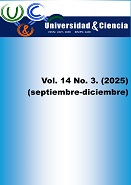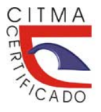Water and financial indicators for agricultural production
DOI:
https://doi.org/10.5281/zenodo.17503545Keywords:
agricultural profitability, climate change, water efficiencyAbstract
Introduction: water scarcity, exacerbated by population growth, climate change, and unsustainable lifestyles, represents a critical challenge for agriculture. Efficient water and energy management is essential to ensure the sustainability of agricultural production systems, especially in vulnerable regions. This study analyzes water and financial consumption indicators that contribute to optimizing productivity under water-stressed conditions. Objective: to analyze water and financial consumption indicators in agricultural production, contributing to more sustainable management in the face of increasing water scarcity. Method: the research was conducted at the Tío Pedro Farm in the province of Ciego de Ávila, Cuba, on Red Ferralitic soils during the period 2020–2023. Soil hydrophysical parameters, evapotranspiration, agricultural yield, water consumption, and energy use were measured. Indicators such as water use efficiency, water productivity, cost per peso of production, and benefit-cost ratio were calculated. Results: tomatoes showed higher yield (29,433.33 kg/ha), with lower water (0,30 m³/kg) and energy consumption (1,48 Wh/kg) compared to beans. Water productivity was 16 times higher in tomatoes, while beans required 9 times more water and energy per unit produced. Conclusion: both crops are economically viable, but tomatoes demonstrated greater water and energy efficiency. Crop selection should consider resource availability, prioritizing tomatoes in water-scarce contexts. The results provide a basis for sustainable agricultural management in the face of climate change.
Downloads
References
Allen, R. G., Pereira, L. S., Raes, D. y Smith, M. (2006). Evapotranspiración del cultivo: guías para la determinación de los requerimientos de agua de los cultivos. FAO. https://bibliotecadigital.ciren.cl/server/api/core/bitstreams/ac9a7957-fed8-42e1-91d6-26a8f89660b1/content
Brindis Santos, A. I., Palma López, D. J., Zavala Cruz, J., Mata Zayas, E. E., y López Bustamante, Y. I. (2020). Paisajes geomorfológicos relacionados con la clasificación de los suelos en Planicies y Terrazas de Tabasco, México. Boletín de la Sociedad Geológica Mexicana, 72(1), 1-17. https://www.scielo.org.mx/pdf/bsgm/v72n1/1405-3322-bsgm-72-01-e090919.pdf
Caviglia, O. P., Rizzalli, R. H., Van Opstal, N. V., Barbieri, P., Melchiori, R. J., Cerrudo, A. y Andrade, F. H. (2012). Productividad y eficiencia en el uso de agua y nitrógeno en sistemas intensificados. FERTILIZAR – Asociación Civil. https://fertilizar.org.ar/wp-content/uploads/2012/09/6.pdf
Gaggioli, C., Noellemeyer, E. y Quiroga, A. R. (2020). Productividad física y económica del agua en cultivos invernales tradicionales y alternativos en la región semiárida pampeana. SIDALC. https://www.sidalc.net/search/Record/oai:localhost:20.500.12123-12022/Description
Góngora Martínez, O., Rodríguez Fernández, P. A., y Castillo Ferrer, J. (2020). Comportamiento agronómico de variedades de frijol (Phaseolus vulgaris, L.) en las condiciones edafoclimáticas del municipio Songo-La Maya, Santiago de Cuba, Cuba. Ciencia en su PC, 1, 31-45. https://www.redalyc.org/journal/1813/181363107003/181363107003.pdf
Jurado Mejía, A. G. y Hernández Londoño, C. E. (2023). Educación ambiental y producción agropecuaria sostenible: una estrategia para la seguridad alimentaria. Ánfora, 30(55), 105-141. https://dialnet.unirioja.es/servlet/articulo?codigo=9256372
Lamz, A., Cárdenas, R. M., Ortiz, R., Alfonzo, L. E., y Sandrino, A. (2017). Evaluación preliminar de líneas de frijol común (Phaselus vulgaris L.) promisorios para siembras tempranas en Melena del Sur. Revista Cultivos Tropicales, 38(4), 111-118. http://scielo.sld.cu/pdf/ctr/v38n4/ctr16417.pdf
Peña, K., Rodríguez, J. C., Olivera, D., Fuentes, P. F. y Meléndez, J. F. (2016). Prácticas agrícolas sostenibles que incrementan los rendimientos de diferentes cultivos en Sancti Spíritus, Cuba. Agronomía Costarricense, 40(2), 117-127. https://www.scielo.sa.cr/pdf/ac/v40n2/0377-9424-ac-40-02-00117.pdf
Riera, C. (2020). La “tierra irrigada” y la mercantilización del agua en un nuevo paisaje hídrico de la agricultura pampeana: el caso del clúster de la semilla. Salud colectiva, 16, e2325. https://www.scielosp.org/article/scol/2020.v16/e2325/es/
Ríos Flores, J. L., Torres Moreno, M., Ruiz Torres, J., Torres Moreno, M. A., y Cantú Brito, J. E. (2015). Evaluación productiva, económica y social del agua de riego de durazno (Prunus persica L. Batsch) en Zacatecas (México). Avances en Investigación Agropecuaria, 19(2), 97-110. https://www.redalyc.org/journal/837/83742619007/html/
Royo Letelier, M. (2023). El derecho a defender la naturaleza de los pueblos indígenas en el marco del cambio climático. Estudios constitucionales, 21(1), 34-62. https://www.scielo.cl/pdf/estconst/v21n1/0718-5200-estconst-21-01-34.pdf
Tarjuelo, J. M., Rodriguez, J. A., Abadía, R., Camacho, E. A., Rocamora, C. y Moreno, M. A. (2015). Efficient water and energy use in irrigation modernization: Lessons from Spanish case studies. Agricultural Water Management, 162, 67-77. https://ideas.repec.org/a/eee/agiwat/v162y2015icp67-77.html
Tornés, N., Gómez, Y., Myor, E. y Brown, O. (2020). Determinación de la eficiencia hídrica y energética en el riego localizado, bajo condiciones protegidas. Revista Ciencias Técnicas Agropecuarias, 29(1), 46-55. http://scielo.sld.cu/pdf/rcta/v29n1/2071-0054-rcta-29-01-e05.pdf
Toscana Aparicio, A., y Günther, M. G. (2021). La sequía de 2019 en localidades cañeras del norte de Oaxaca. Vulnerabilidad, prevención, adaptación y mitigación. Estudios sociales. Revista de alimentación contemporánea y desarrollo regional, 31(57), 1-29. https://www.scielo.org.mx/pdf/esracdr/v31n57/2395-9169-esracdr-31-57-e211076.pdf
Downloads
Published
How to Cite
Issue
Section
License
Copyright (c) 2025 Universidad & ciencia

This work is licensed under a Creative Commons Attribution-NonCommercial-ShareAlike 4.0 International License.





















